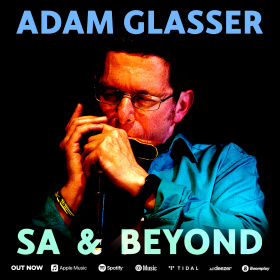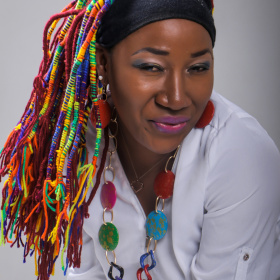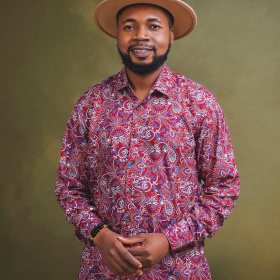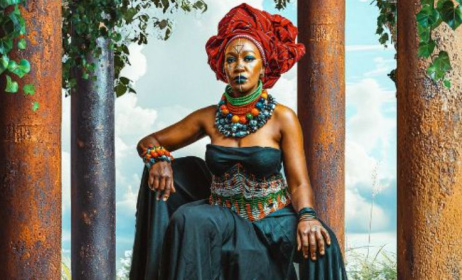Music industry in Kenya and the futuristic dynamics of its economics
By DJ Collo
It is said that you are better of learning from someone else’s experiences than your own. And my 12 years as a DJ and event organizer in the music industry in East & Central Africa have given me valuable lessons involving money. Yes, money is always an issue you can’t ignore.
 DJ Joe Mfalme. Photo: www.enews.co.ke
DJ Joe Mfalme. Photo: www.enews.co.ke Kenyan musician Redsan. Photo:www.allafrica.com
Kenyan musician Redsan. Photo:www.allafrica.com
I remember the standard price for a Kenyan artist being KES. 8,000 ($79) per gig back when artists like JuaCali, Nameless, Redsan and the likes used to record in dingy backyard studios, trying to organize neighbourhood gigs themselves. Today you can’t have Redsan in your event for less than $10,000.
For the Kenyan DJ, it was a rat race just to stay alive, I remember being paid KES15, 000 ($148) per month as a resident DJ working for one of the top clubs in East Africa. However our contribution as DJs to the East African music industry is immense. It was a period when Kenyan "genge" music was in its infancy and literally had to be shoved down the listener's throat.
One of the methodologies to do this as a DJ was to play an 'acapella' (acapellas didn't exist so you had to tweak the audio with your DJ mixer by killing the bass and lowering the treble, while lifting the mids a little) and you had a remix version of a Kenyan 'hit' - if you remixed it properly with the current hip hop hits at that time.
It would work most of the time depending on your creativity. The result was the production of a three-piece as studios and upcoming artists realized the need to release their music in three formats: main track, instrumental and acapella. Most radio stations would also not have Kenyan music on high rotation.
However one established radio station —a very new entrant to the market at that time—in a bid to position themselves in the market took the risk of shoving Kenyan music down people’s throat. The gamble paid off when a Production studio named 'Ogopa DJs' produced the first Kenyan multi-artist studio album named "Ogopa 1".
The album was really ear-candy with the distinctive Afro-Benga beats, especially on the bass lines. It was also relatable to the African listener, with Kenyan rappers who talked of everyday life which resonated well with the market and voila! Kenyan urban music had a chance to break into the mainstream market seizing up a chunk of Congolese Lingala and in the long run rendering some Congolese artists jobless.
As this genre of music became popular, stakeholders in the industry began taking note and saw the need to inject seriousness into what was now considered a business. Playing a pivotal role were the event organizers and media houses. Studios started positioning themselves for commercial gain and artists realized their monetary values as corporate entities started paying interest which resulted in brand endorsements later.
As more entrepreneurs and wannabe artists flooded the market there was a new dawn in the Kenyan entertainment industry. The music had spread to far flung places such as Lusaka, Addis Ababa, Johannesburg and even Beijing! The success of Ogopa DJs meant that more artistes in the region from Kampala and Dar es Salaam camped in Nairobi's Ogopa's studio, some actually managed to get a slice of the super beats. Chameleone’s 'Mama Mia' was a big tune in East Africa in the early years of the millennium.
A wave of political change was sweeping through the country in 2002. The incumbent president, Moi, was not running for re-election. With the opposition united to defeat the president’s preferred candidate, music become their medium to reach to the ordinary citizen.
For a country where politics touches every aspect of life, 'Unbwogable' (which loosely translates to ‘you can’t scare me’) turned out to be a resistance tune to the exiting regime. The appropriation of the song Unbwogable, glamorized the opposition‘s 2002 campaign at a colossal amount that was undisclosed. The song by the dynamic duo of Gidi Gidi Maji Maji was produced by Bruce Odhiambo.
It was indeed a journey with sweet rewards, Kenyan artists began globetrotting performing to home-sick Kenyans in the Diaspora. Where artists proved unaffordable event organizers in the Diaspora always had the option of a DJ. Artists started living decent lives and the message was written on the wall, who was the greatest amongst us? And proof of it was the universal measure of value – money. How much do you have of it? And hence we had the 'swag' generation of Kenyan artists.
Financial investment units realized the contribution of these newly-bred Kenyan artists and pursued them. Politicians realized the impact of their influence to the masses and serenaded them. Corporates in their traditional fashion tried to tie them down with fad wads of cash.
The stage was set for the next phase of the industry. It took 15 years to realize where we are positioned, and that indeed it was possible to earn a decent living through music in East Africa.
This article was first published in June 2014. You can read it here
DJ Collo started out as a hip hop DJ. As a DJ he currently specializes in Electro Dance Music.




































Comments
Log in or register to post comments